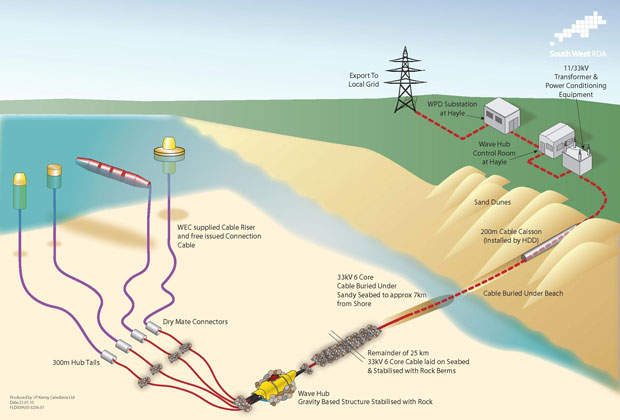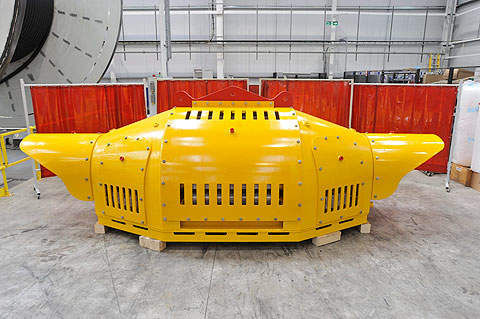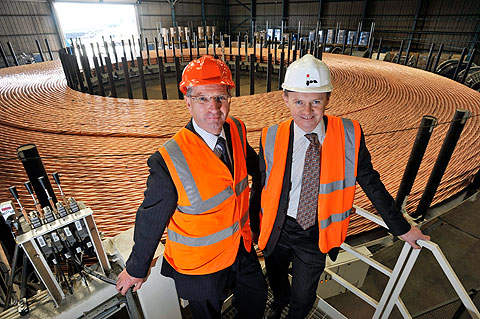The Wave Hub marine renewable infrastructure project is the world’s largest test site for wave energy. It is located ten miles off the coast of Cornwall in England. The plant serves as a demonstration facility for developers to test wave energy devices and in doing so, the hub generates electricity.
The project has been developed by South West Regional Development Agency (SWRDA) at an estimated cost of £42m and was undertaken as part of the company’s strategic plan to develop world-class marine energy industry in South West England.
The plant has an initial capacity of 20MW, sufficient to provide electricity to 7,000 homes, with a provision to increase it to 50MW in the future.
It was approved in 2007 after seven years of planning. The wave hub was successfully installed on the seabed in September 2010 and the complete system was officially opened in November 2010.
According to an independent economic assessment, the project will create 1,800 jobs and will provide £560m to the UK economy over a period of 25 years.
In June 2010, the government announced to close all RDAs in the country, including SWRDA, by March 2012. So, in order to secure the future of the project, the government took over the plant under its control. The ownership will now be transferred to Department for Business Innovation and Skills (BIS).
Finance
SWRDA has invested £12.5m in the wave hub and the project has received financial backing of £20m under the European Regional Development Fund (ERDF) Convergence Programme. In addition, the UK Government and the Peninsula Research Institute for Marine Renewable Energy (PRIMaRE) have granted £9.5m and £20m respectively.
Wave hub project
The hub on the seabed is a steel structure which is 2m high and 6m long. It is covered with resin to ensure it remains watertight. It weighs 12t and is designed to last for 25 years.
The four tails are 300m long and are used to connect the wave generation devices on or below the surface of the sea to the wave hub.
The underground cable is 25km long, 33kV, three-phase power cable weighing 1,300t. It is 16cm in diameter and is made up of six copper cores.
Wave hub plant details
The hub on the seabed is a steel structure which is 2m high and 6m long. It is covered with resin to ensure it remains watertight. It weighs 12t and is designed to last for 25 years.
The four tails are 300m long and will connect the wave generation devices on or below the surface of the sea to the Wave Hub.
The underground cable is a 25km long, 33kV, three-phase power cable weighing 1,300t.
Contractors
All the contracts were awarded based on competitive bids.
A contract for the manufacture of sub-sea cable was awarded to Hartlepool’s JDR Cable Systems who also supplied four additional 300m cables in the second quarter of 2010.
On 19 May 2010, JDR subcontracted CTC Marine Projects to install the cable and the hub in the sea for £7m.
The onshore construction contract was awarded to Dawnus Construction.
The UK power market
The UK was one of the few countries that were self-sufficient in energy until 2000. With large coal reserves and oil extraction from the North Sea, the UK was an exporter of oil and gas. However, due to the decline in North Sea production, high mining costs and demand to use clean coal, it is now expected to become an importer of oil and natural gas by 2015, making it vulnerable to unstable electricity prices.
Electricity generation accounts for 30% of the UK’s carbon emissions. In order to keep up with the Kyoto Protocol the UK Government has set a target to cut 60% of its carbon emissions by 2050.






